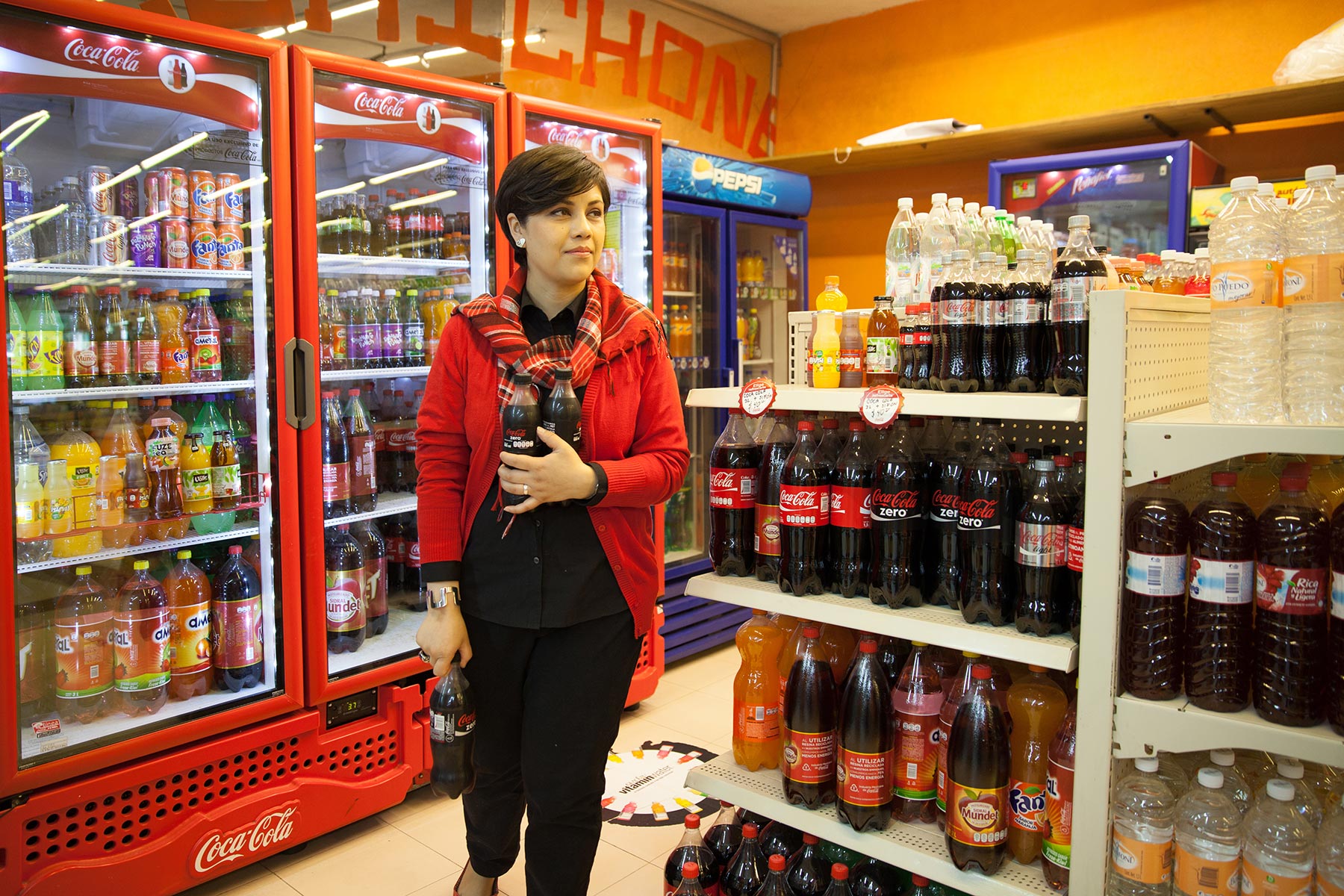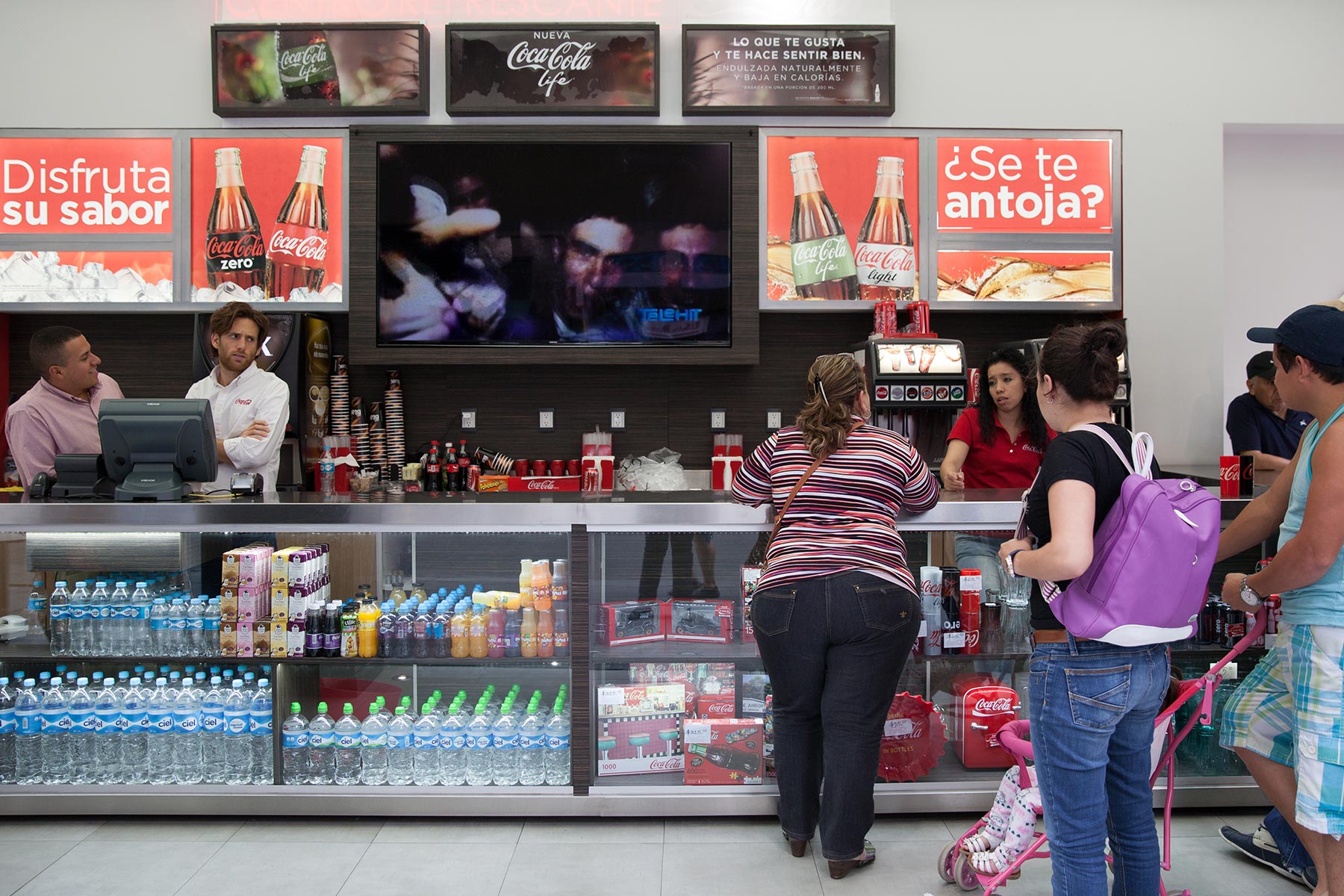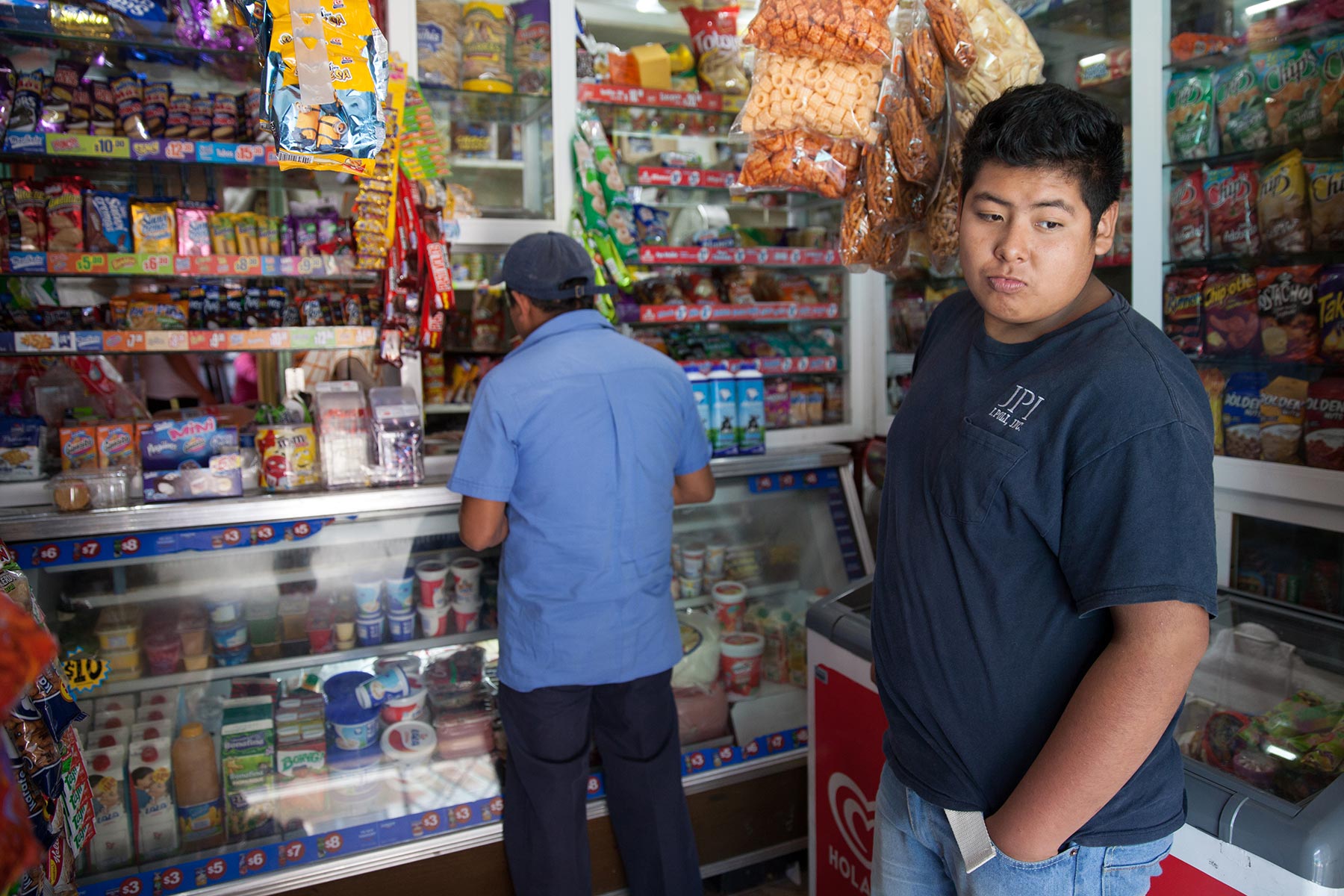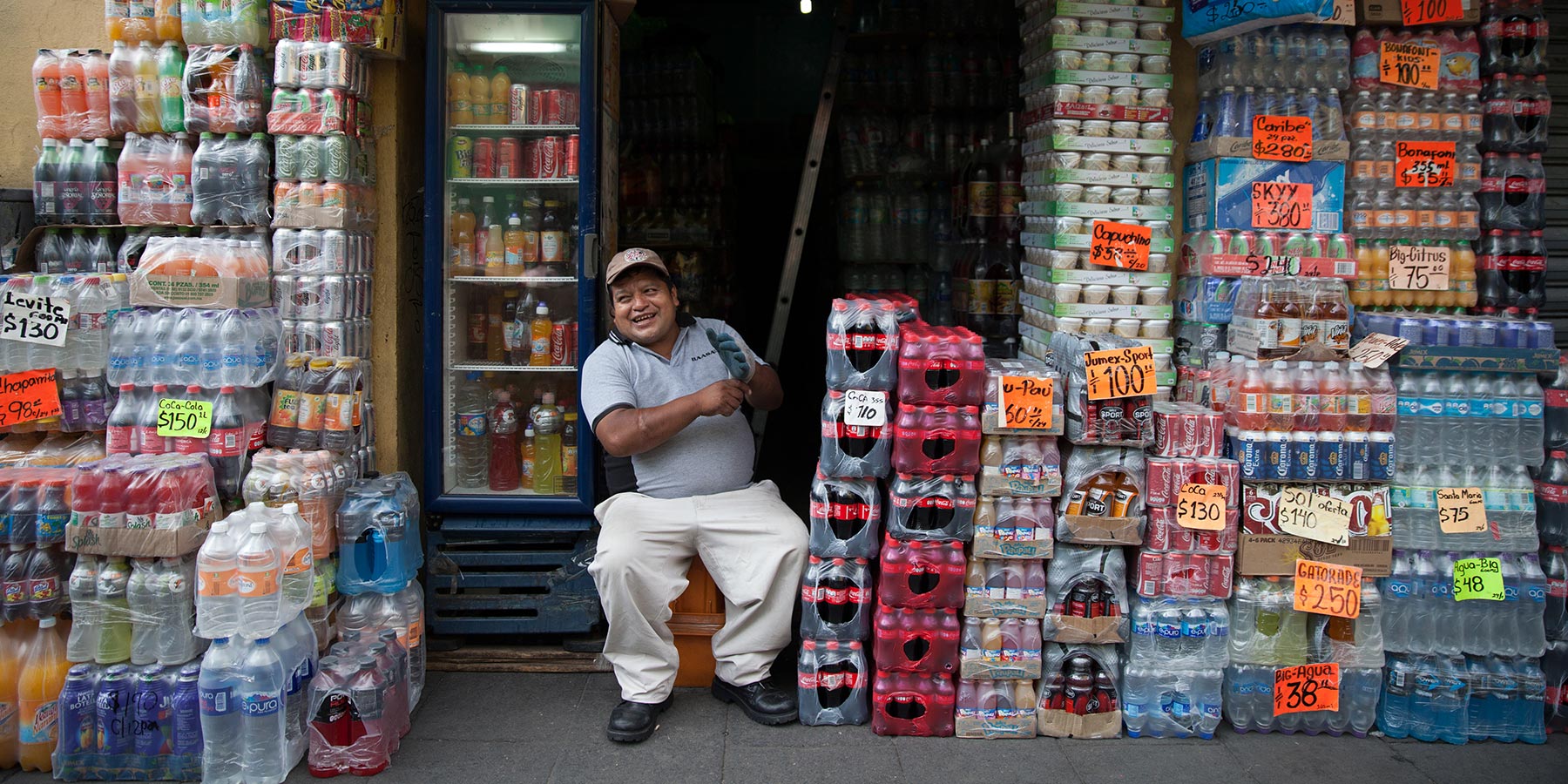
Taxing soda, saving lives
Mexico's surcharge on sugary drinks is the Real Thing
Series
Part three in a three-part series about obesity in Mexico.
There’s a certain irony to Coca-Cola’s expansion of its hugely popular “Share a Coke” advertising campaign in Mexico. The rollout includes soda cans personalized with names like Luis and Gabriela, including versions with names printed in Braille. Mexico consumes more soda per capita than any other country, and research links sugary drinks to obesity and diabetes, a leading cause of death in Mexico.
And blindness.
More than 14 million Mexicans have diabetic retinopathy, which impairs vision.
That could explain why Mexico became the first country to impose a national soda tax, which went into effect on the first day of 2014.
“It was a really big deal. A really, really big deal,” said Marion Nestle, a professor of nutrition, food studies and public health at New York University and the author of the forthcoming book “Soda Politics: Taking On Big Soda (and Winning).”
“Generally, the taxes are considered the most radical things you can do about obesity,” said obesity expert Kelly Brownell, the dean of the Sanford School of Public Policy at Duke University.
The tax is an excise tax (meaning it’s paid at the point of purchase) that tacks on a peso (about 6 cents) per liter to sales of sugar- or syrup-sweetened sodas, juices, energy drinks and bottled tea and coffee. It also applies to drink powders and concentrates but excludes flavored milks, diet sodas and bottled waters.
Mexico’s consumption of Coca-Cola carbonated beverages alone (Coke, Fanta, Sprite, others) dwarfs the rest of the world. While Coca-Cola is the leading soft drink company in Mexico, government estimates put overall consumption as high as 176 liters, or 496 cans, of soda a year per person.
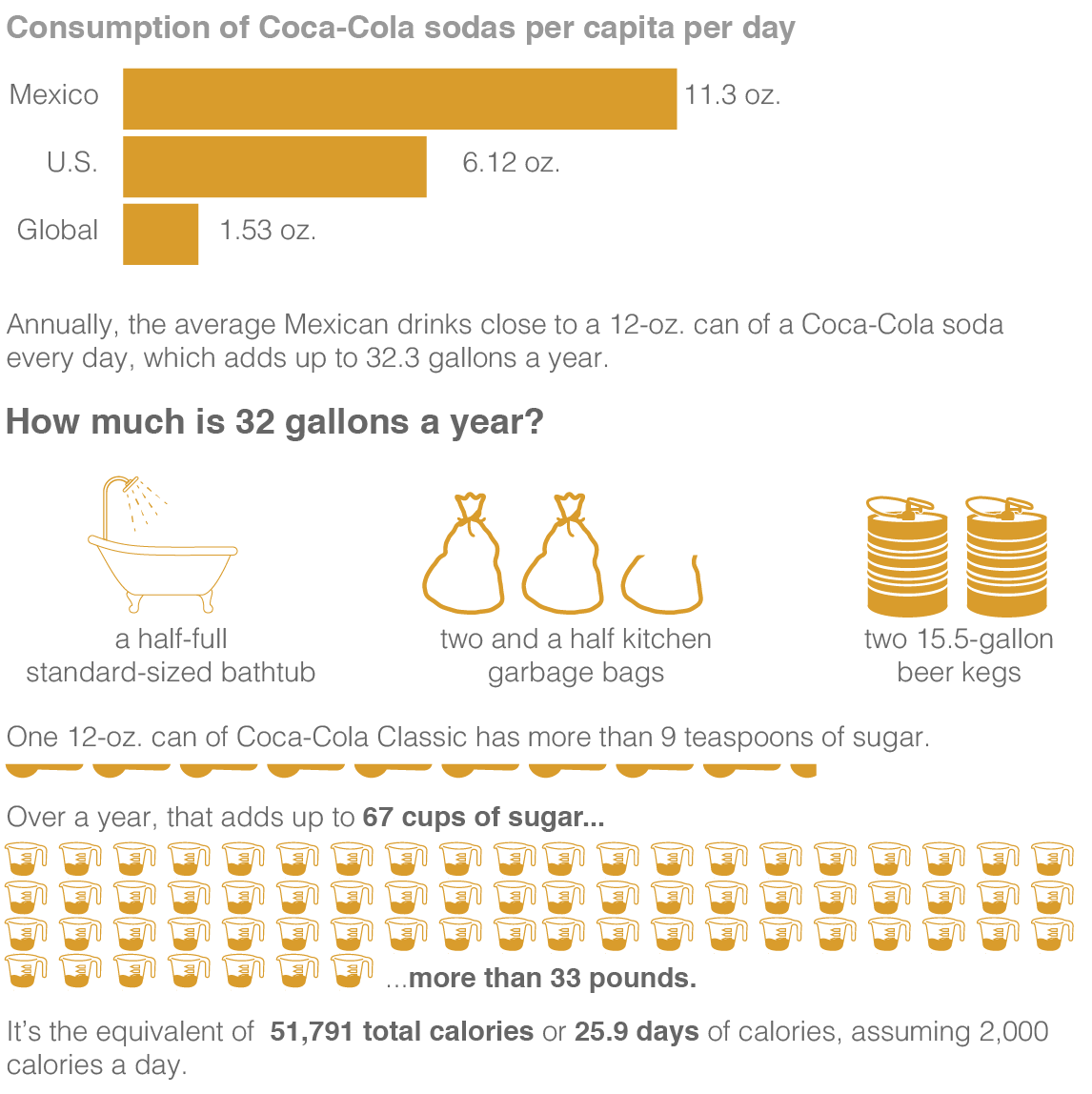
Mexicans drink an astounding 176 liters of sugary drinks per year, on average, compared with just under 95 liters in the U.S. and 22 liters globally, according to an April 2015 report from Mexico's Center for Public Finance Studies. If accurate, that would make Mexicans by far the biggest soda drinkers in the world. However consumption reports vary. The 2015 Euromonitor report on worldwide consumption of carbonated soft drinks found Mexico has reduced its per capita consumption to 111 liters, behind both Argentina (142 liters) and Chile (127 liters), but ahead of the U.S. (103 liters). An Al Jazeera analysis of Coca-Cola sales reports determined more than 122 liters of Coca-Cola carbonated drinks alone were sold per person in Mexico in 2014.
Mexico also has the highest rate of deaths directly linked to sugar-sweetened beverages (SSBs, in policy-speak), according to a 2010 Tufts University study.
“Sodas are deeply entrenched in Mexican culture as a result of deliberate soda marketing in the ’80s and ’90s. Because the water supply in Mexico is not very good, sodas replaced water, and they’re used in religious ceremonies, and they’re sold in 3-liter bottles there,” said Nestle. “So [the soda corporations] have enormous political power … because their political activities are so extraordinarily comprehensive.”
According to a Reuters investigation, Big Soda in Mexico plays an outsize role in determining the country’s policies on obesity, food labeling, trade and other public health matters. No one exemplifies the industry’s coziness in political circles better than Vicente Fox, who served as the president of Mexico from 2000 to 2006. Before his political career, he was the president of Coca-Cola Mexico.
On the pro-tax side, consumer advocacy group El Poder del Consumidor launched a sophisticated education, marketing and lobbying campaign, with the help of a $16.5 million commitment from Bloomberg Philanthropies.
“In the administration of Felipe Calderón, from 2006 to 2012, we had half a million people that died from diabetes. In 2013 we had 75,000 people receive amputations because of diabetes,” said El Poder del Consumidor’s director, Alejandro Calvillo. “These are more victims than organized crime.”
Current President Enrique Peña Nieto has stated that the primary purpose of the soda tax is to combat obesity and diabetes, particularly among children. And nowhere is the link between soda consumption and obesity more evident than in Mexico.
Researchers at the Friedman School of Nutrition Science and Policy at Tufts University measured the mortality rate due to sugary drinks across the 20 most populous countries. Their study found that Mexico had more preventable deaths attributed to sugar-sweetened beverages than any other — an estimated 24,000 in 2010, compared with 72 in Bangladesh. It also found that sugary drinks are responsible for nearly half (45 percent) the deaths from cardiovascular disease, diabetes and cancer in Mexico.
“SSBs are a single, modifiable component of diet that can impact preventable death/disability in adults in high-, middle- and low-income countries, indicating a need for strong global prevention programs,” the study concluded.
Public health advocates say the most cost-effective public policy interventions for fighting obesity are taxing unhealthy foods and drinks, requiring simple, intuitive front-of-package nutrition labeling and restricting marketing of unhealthy foods and drinks to kids.
The soda industry fought the tax, and according to Calvillo, “when the soda industry talks [in Mexico], it’s Coke that’s speaking.”
According to a report from market researcher Euromonitor International on soft drinks in Mexico, three companies hold nearly 70 percent of market share. The Coca-Cola Co. has 45 percent of the Mexican market, which accounted for $2 billion in revenue in 2014, according to the company’s SEC filings. The company’s penetration in the country is so successful, it’s been dubbed the Coca-colonization of Mexico.
Francisco Crespo, the president of Coca-Cola Mexico, and Francisco Zambrana, the president of the Mexican beverage association ANPRAC, denied requests to meet with Al Jazeera in person or speak by phone. Crespo’s office shared this statement on behalf of the company: “The special tax on sugar-sweetened beverages has not been effective to reduce the overweight and obesity levels in Mexico. Imposing taxes on a single category can’t be the solution because people take in calories from many food and beverage sources, therefore, taxing one product is unfair and will not solve a problem as complex as obesity.”
In attempts to stave off the tax, the soda industry questioned the science behind the link between soda consumption and obesity and argued that the tax would cost jobs and hurt the economy.
The industry positioned it as an unfair tax on chubby people and one that would be felt most by the poor, who, it argued, rely on sugary drinks to meet their minimum calorie needs.
And it promoted the need for individual responsibility and an active lifestyle rather than government regulation. Coke encouraged customers, “Haz deporte” (play sports), and ANPRAC launched a “Know yourself, get active, get balanced” campaign.
It’s the same argument that landed Coca-Cola in hot water last week when The New York Times reported that the company is funding the nonprofit Global Energy Balance Network, which argues that soda drinkers should worry less about calories consumed and more about calories expended through exercise.
It’s an argument that nutritionists have disputed for years.
“There is no doubt that physical activity is an important public health priority, but it is unlikely to be an effective tool for obesity prevention without major shifts in caloric intake,” Brownell co-wrote in a 2012 article published in the medical journal Circulation.
In the end, Coca-Cola suffered a 1 percent decline in volume of sales in Mexico in 2014, which they attribute in their SEC filings as being "primarily due to the impact of a new excise tax." But Mexico clearly remains a top market. Last summer the company announced an additional $8.2 billion investment in its Mexico operations by 2020. (During a photo op, Peña Nieto was presented with an Enrique can.)
And there’s certainly no slowdown in marketing campaigns. On Coca-Cola International’s July quarterly earnings call, the company’s president, Ahmet Bozer, highlighted Germany, Mexico and Nigeria as markets where advertising is being increased in order to drive revenue.
“The bottlers and our teams have strong conviction about how better and more advertising drives top line,” he said.
As Calvillo sees it, the responsibility lies with the Mexican government to rein in industry practices and protect citizens.
“The industry will do everything, everything that the governments permit. Their nature is to take earnings — and it’s OK. They need to report [to their shareholders] each three months how they increased their value,” he said.
The food industry has a special interest in targeting children, who are still developing taste preferences and brand loyalties.
But it also has an interest in those children getting fat.
The average U.S. child today is more than 10 pounds heavier than 30 years ago, according to a recent article published in The Lancet, “Child and adolescent obesity: part of a bigger picture”. That implies an extra 200 calories per day, at an average cost of $1.12 daily, or more than $400 per year per child. And the chances are that children who overeat will continue to overeat through adulthood.
“Left to the market, children’s nutrition security is all too easily undermined,” the authors warned.
At the Coca-Cola Store in downtown Mexico City, workers in red pinstripe uniforms float around restocking the refrigerators. The first two cases are reserved for Coke products, including the new lower-calorie, stevia-sweetened Coca-Cola Life, which arrived on Mexican shelves late last year. The others display the vast assortment of other Coca-Cola products in Mexico — from classics like Sprite, Fanta, Lift and Fresca to Ciel waters and del Valle juices, Powerades and Fuze teas to lesser-known fizzy drinks like Delaware Punch, Senzao Hawaina and Prisco Mundet.
The store’s manager, Mark Masmiah, estimated that about 3,000 customers visit the small store daily. He said classic Coca-Cola — “la roja” (the red) — remains by far the most popular purchase. And the soda tax?
“It has not affected business at all,” he said.
But preliminary results from a study by Mexico’s National Institute of Public Health and the University of North Carolina paint a different picture. The study was funded by Bloomberg Philanthropies and the Robert Wood Johnson Foundation.
According to the findings, the soda tax was effectively a 10 percent tax, and Mexicans bought 6 percent less of sugary drinks in 2014 as a direct result of the increased cost and awareness around it.
The reduction was across all incomes, with the largest — 9 percent — among the poorest group. Furthermore, the impact is growing, with the end of the year marking notably fewer sales.
The drop came despite national and international public health groups’ recommendation of a 20 percent tax on SSBs to notably reduce consumption.
“For me, the most impressive part is that it was an effective tax at all,” said Brownell. “I was delighted that Mexico passed the tax but worried it would be too small to have any impact on consumption.”
Simon Barquera, the director of nutrition policy and program research at Mexico’s National Institute of Public Health, was also pleasantly surprised by the preliminary results.
Last year, he said, saw “two of the most important campaigns in Mexico”: “Share a Coke” and the World Cup. “Even with that in place and with a lot of investment in sports events, there was a reduction [in soda consumption].”
But alongside enthusiasm for the apparent impact is frustration with how the tax revenue is being used.
According to the Mexican government, the soda tax brought in $1.3 billion in revenue in 2014. However, only $900,000 has been authorized for installing water fountains in public schools — one of the soda tax advocates’ key demands.
While the tax has certainly put pressure on the soda companies, they are far from defeated. “Companies are looking at alternatives,” Barquera said.
According to Euromonitor International’s “Soft Drinks in Mexico” report in March, the most common strategies are to reformulate products (using sugar substitutes) to avoid the tax and to highlight any natural ingredients in products to boost sales.
“Probably the food industry needs to transform to less unhealthy and more healthy products, and they need to recognize that they need to inform in a fair way to the consumer,” Barquera said. “It’s very easy in developing countries to mislead the consumers. They think caffeine is good because it gives you energy and concentration and the sugar is good because it gives you performance, and in reality, these kinds of messages are not allowed in developed countries.”
“McDonald’s and Coke are having trouble with maintaining profits in the U.S., but they’re making tons of money outside of the U.S. The euphemism is ‘emerging markets,’ but you can easily say that just means exploiting the most vulnerable parts of the world,” said Brownell. “I think companies have to be held accountable for their behavior.”

